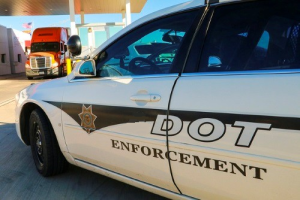
If you manage a commercial fleet, you’ve likely encountered the Commercial Vehicle Safety Alliance (CVSA). Founded in 1982, the CVSA is a nonprofit organization that operates across North America, including the United States, Canada, and Mexico. The alliance is made up of local, state, provincial, and federal inspectors, enforcers, and industry representatives working together to improve commercial vehicle safety.
With approximately 13,000 professionals involved, the CVSA’s mission is to standardize inspections, ensure uniform enforcement, and promote reciprocity in commercial vehicle inspections across the continent. Ultimately, the goal is to enhance road safety for both private motorists and commercial drivers by streamlining and standardizing inspection processes.
The CVSA has three (3) enforcement events each year focused on inspecting trucks and finding violations. Historically about 23% pf vehicles inspected are placed out of service and 5% of drivers suspended!
(To avoid CVSA & DOT Violations, have your trucks DOT Inspections completed on-site by Mobile Wrench’s certified diesel mechanics )
72-Hour Inspection Blitz: (Normally scheduled in May)
One of the CVSA’s most prominent events is the International Road Check, commonly known as the 72-Hour Inspection Blitz. This is the largest inspection campaign of its kind globally. Over a 72-hour period, inspectors check approximately 50,000 trucks across the U.S., Canada, and Mexico. The standard inspection during this event is the CVSA Level I inspection, which assesses both driver qualifications and the mechanical condition of the vehicle. Inspectors focus on key areas such as brake systems, cargo securement, coupling devices, exhaust systems, frames, fuel systems, lighting, suspension, tires, and more.
Operation Safe Driver Week: (Normally scheduled in July)
Operation Safe Driver Week is a week-long initiative designed to address the significant role driver behavior plays in traffic accidents, contributing to 94% of all crashes. During this week, CVSA teams up with law enforcement to target and prevent unsafe driving behaviors. Typically, about 46,000 citations and 87,000 warnings are issued for violations like speeding, seatbelt non-compliance, failing to obey traffic signals, and using handheld devices while driving. This campaign emphasizes the importance of driver responsibility and performance, and fleet operators should ensure their drivers are following safe practices to avoid penalties.
Brake Safety Week: (Normally scheduled in August)
Brake Safety Week is part of Operation Airbrake, a nationwide initiative led by the CVSA to highlight the importance of brake system maintenance. Brake-related issues, including misadjusted or malfunctioning brakes, account for about 50% of all out-of-service violations for commercial vehicles. A vehicle with poor brakes can increase stopping distance and compromise safety. During this week, inspectors focus on checking brake systems, hoses, auto slack adjusters, and malfunctioning ABS lights. The CVSA-affiliated officers conducted more than 17,000 inspections specifically targeting brake violations. Of these, 16.1% of vehicles had critical brake-related issues, leading to their removal from service until repairs were made.
The Costs of Failing a CVSA Inspection
Failing a CVSA inspection can be financially damaging for fleet operators. Fines typically range from $1,500 to $3,500. However, fines in the tens of thousands of dollars do occur.
When a vehicle fails, it may be referred to as a full roadside inspection by the Department of Transportation (DOT), and issues with the brakes could indicate further mechanical problems.
Operators are not only responsible for the citation fees but also face the downtime of having the vehicle off the road until repairs are made, adding repair costs to the overall expense. As always, regular preventative maintenance is essential to avoid the unexpected costs of failed inspections.
The CVSA’s safety efforts help make the roads safer for everyone, but fleet operators must account for the potential costs of these inspections. Investing in maintenance keeps your vehicles in good condition and your fleet running smoothly.
